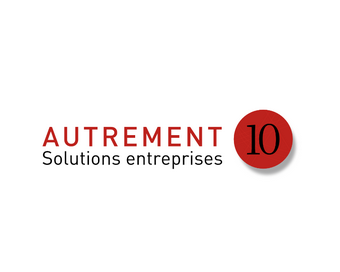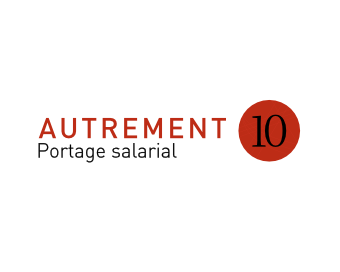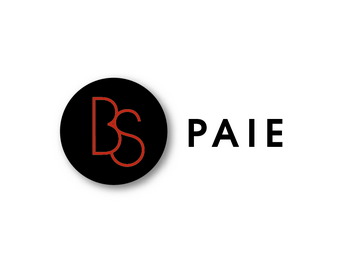sept 19 2022
Discounted Cash Flow Models DCF: Guide and Examples
Dividend discount models, such as the Gordon Growth Model (GGM) for valuing stocks, are other analysis examples that use discounted cash flows. Discounted cash flow can help investors who are considering whether to acquire a company or buy securities. Discounted cash flow analysis can also assist business owners and managers in making capital budgeting or operating expenditures decisions. In the formula, the discount rate includes the subject company’s weighted average cost of capital, which refers to the various ways the company can access capital to pay for its infrastructure and operations.
To get the intrinsic value per share, we divide this by the total number of shares outstanding. Relative to the current share price of JP¥3.4k, the company appears quite good value at a 34% discount to where the stock price trades currently. Valuations are imprecise instruments though, rather like a telescope – move a few degrees and end up in a different galaxy. By focusing on projected cash flows rather than market trends or comparable companies, DCF provides a precise measure of an asset’s intrinsic value. This eliminates potential distortions caused by market volatility or accounting adjustments. Choosing the correct discount rate is critical to the accuracy of a DCF analysis, but determining this rate can be subjective.
- One of the most significant drawbacks of DCF is its sensitivity to assumptions.
- By running different scenarios with varying discount rates and cash flow projections, you can evaluate risks and better prepare for potential financial challenges, helping you to make more strategic decisions.
- By understanding its advantages and limitations, you can better assess whether DCF is the right tool for your financial analysis or investment evaluation needs.
- Resources and tools to help move your business forward from the experts at Capital One.
- The DCF calculation is ideal for certain industries or companies since it evaluates a company’s current value by projecting its future cash flows or profits.
- The total value is the sum of cash flows for the next ten years plus the discounted terminal value, which results in the Total Equity Value, which in this case is JP¥582b.
Each of these advantages highlights why DCF is a preferred tool among investors aiming to assess a company’s true value. Discounted cash flow and net present value are not the same, though the two are closely related. After forecasting the expected cash flows, selecting a discount rate, discounting those cash flows, and totaling them, NPV then deducts the upfront cost of the investment from the DCF. For instance, if the cost of purchasing the investment in our above example were $200, then the NPV of that investment would be $248.68 minus $200, or $48.68. It is an analysis that can be applied to a variety of investments and capital projects where future cash flows can be reasonably estimated.
Disadvantages of Discounted Cash Flow Methods
DCF, however, allows for a detailed assessment of cash flows over a long period, providing a more comprehensive view of an asset’s future profitability. Discounted cash flow (DCF) analysis is a method used in corporate finance and valuation to estimate the attractiveness of an investment opportunity. DCF analysis uses future free cash flow projections and discounts them to arrive at a present value estimate, which is used to evaluate the potential for investment. The DCF model excels in offering advantages of discounted cash flow a detailed view of a company’s value, focusing on expected cash flows.
- There are four methods to judge the profitability of different proposals on the basis of this technique.
- By using projected future cash flows and discounting them to their present value, investors can determine whether an asset is overvalued or undervalued, helping build a balanced and profitable portfolio.
- Ready to strengthen your financial management, analysis, and decision-making skills?
You’ll want to use discounted cash flow to assess the value of an investment when its cash flow is relatively stable and predictable. DCF technique applies various approaches, adapted to the specific valuation methods of every scenario. Since the NPV is negative (-₹782,206), it indicates that the project would not generate enough return to cover the initial cost. In this case, it would be advisable for the company to reconsider the investment. Choose an appropriate discount rate, often using the Weighted Average Cost of Capital (WACC), to account for the time value of money. DCF Valuation is extremely sensitive to assumptions related to perpetual growth rate and discount rate.
Know your Numbers! – Modelling PPE and Capex
Overestimation of growth rates is a common pitfall in DCF analysis and can be difficult to avoid, particularly when evaluating early-stage companies. Like most valuation models, the DCF model is not always the best choice, particularly for assets with unstable cash flows or industries characterized by uncertain cash flow generation. Its use is notably inappropriate for valuing companies in the banking and finance sectors due to the unique nature of their cash flows and regulatory environments. This limitation highlights DCF’s challenge in accurately assessing the value of investments that do not fit the model’s preference for stable and predictable cash flows.
Stock trading vs trading in Forex
The discount rate should reflect the risk profile of the investment, but different analysts may choose different rates based on their interpretation of risk, industry conditions, or other factors. A small difference in the discount rate can dramatically alter the valuation, leading to either overvaluation or undervaluation. Discounted cash flow analyses have been used to evaluate business ventures since the eighteenth century. It also comes up in legal disputes, for instance, as a means of determining the value of a plaintiff’s asset or venture that has been damaged or otherwise impacted by the defendant. Intrinsic Value of a business is the present value of the cash flows the company is expected to pay its shareholders.
The main advantages of a discounted cash flow analysis are its use of precise numbers and the fact that it is more objective than other methods in valuing an investment. Included on this page, you’ll find information on the advantages and disadvantages of discounted cash flow analysis, when to use it, when not to use it, and real-world examples showing its limitations in evaluating investments. There are several methods of valuing a company or an asset, discounted cash flow (DCF) being one of them. Here, we will try to understand the concept of DCF and learn about some of its advantages and flaws.
What’s The Estimated Valuation?
And it can be challenging to accurately determine the impact these factors will have when calculating DCF. Using the DCF formula, the calculated discounted cash flows for the project are as follows. A discounted cash flow analysis also has limitations, as it requires you to collect a significant amount of data and relies on assumptions that can, in some cases, be wrong. The Simply Wall St app conducts a discounted cash flow valuation for every stock on the TSE every day. Apply the discount rate to the cash flows and terminal value to bring them to their present value. In this article, we will explore 10 pros and 10 cons of using the Discounted Cash Flow method.
This necessitates estimation and assumption about the future business growth and profitability, among other aspects. DCF analysis, demands a multipurpose consideration in the realm of finance, catering as the key to prosperous investment strategies as well as representing a core valuation method. Therefore, the main factor of investing is diversification—evaluating the attractiveness of investment projects, and it allows investors to make quantitative-based decisions. Using the DCF method, investors can find investment assets whose series price relationship to market factors might indicate that they are undervalued or overvalued. DCF is inherently forward-looking, meaning that it places significant emphasis on future cash flows rather than current financial performance.
Advantages and Disadvantages of Accounting Rate of Return Method
Whether you are starting your first company or you are a dedicated entrepreneur diving into a new venture, Bizfluent is here to equip you with the tactics, tools and information to establish and run your ventures. Cam Merritt is a writer and editor specializing in business, personal finance and home design. He has contributed to USA Today, The Des Moines Register and Better Homes and Gardens »publications. Merritt has a journalism degree from Drake University and is pursuing an MBA from the University of Iowa. TOUCHPOINT by Firmex highlights the human dimension of corporate transactions, dealmaking, and the relationships behind them. (3) The selection of cash-inflow is based on sales forecasts which is in itself an indeterminable element. All programs require the completion of a brief online enrollment form before payment.
By using the current share price in the model and working backwards, it reveals if a company’s stock is overvalued or undervalued. This reverse DCF method assesses the justification of the current stock price, comparing it against the company’s expected cash flows. It offers a practical way to confirm the soundness of investment decisions, ensuring the market price is supported by the financial forecasts. Startups and small businesses can leverage DCF to estimate their company’s value, secure funding, and plan long-term financial strategies. Understanding the present value of future cash flows allows entrepreneurs to justify their valuation to potential investors and lenders, making it easier to attract capital for expansion and growth.
By concentrating on future potential, DCF becomes an invaluable tool for those with a long-term investment strategy, incorporating all future expectations about a business. It shifts the focus to estimating the present value of these future cash flows, providing a perspective geared towards the future potential of a company. When calculating DCF, it’s important to first understand your business’s financials and the potential outcomes of the investment you’re considering.
Does Harvard Business School Online offer an online MBA?
One of the biggest advantages of the DCF template is its ability to model different scenarios by adjusting variables such as discount rates, growth rates, and cash flow projections. This flexibility allows users to test best-case and worst-case situations before committing to a financial decision. You can use the discounted cash flow method to come up with a value for the company. Berk and DeMarzo note that while about three out of four companies use net present value in making investment decisions, they often use it in combination with other methods of analysis.
Explore Strategic Financial Analysis—one of our online finance and accounting courses—to leverage financial insights to drive strategic decision-making. The positive number of $2,306,727 indicates that the project could generate a return higher than the initial cost—a positive return on the investment. For DCF analysis to be useful, estimates used in the calculation must be as solid as possible. Estimating too highly will result in overvaluing the eventual payoff of the investment. Likewise, estimating too low may make the investment appear too costly for the eventual profit, which could result in missed opportunities. Tesla faces decreased buyer enthusiasm and, despite offering discounts that ate into the company’s profitability, weakening demand.

































